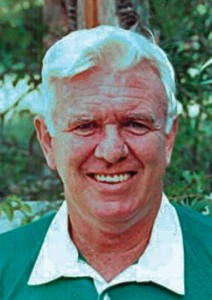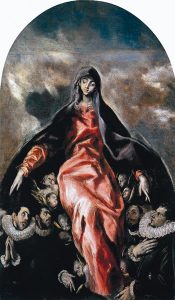Reflections on Marist Spirtuality (2)
These reflections were first published in 2012 in Tutu - Another Way, written by Adele M.E. Jones with Michael McVerry sm. They are reprinted with permission.
Nothing is more urgent than for lay people to fulfil their role
Right from the beginning when Fr Colin presented the plan of the Society in Rome lay people were an essential part of it. Fr Colin envisaged the Society of Mary as a tree with many branches. Fr Coste, the Marist historian, says there is nothing more urgent than to have the laity fulfil their part in the Marist project. In this Colin was prophetic. The idea came too early to be carried out fully in the 19th century. But now the time has come. Fr Coste says that without the lay people it is not the Blessed Virgin’s work. He says that the early Marist texts are very clear – it is a question of building a new Church. You do not build a new Church without the laity. In his book The Age of Mary Fr Jan Snijders tells us “the church in the age of the laity will not be a Church without priests or religious, but they will have to be more ‘hidden and unknown’ for the Church to grow.” Working toward the declericalisation of the Church fits in with the sense of our mission. Our hope lies in a Church modelled after Mary, who was a lay woman.
Mary’s presence to others
Mary is tremendously concerned for the Church. She increases her care when the human race is at its most sick. Mary wants to be present in the world: touching, convincing, winning over, and converting the world. Marists are to be Mary’s presence to other people, listening and learning, respecting the other person’s freedom, trying to understand the feelings of others, being sympathetic and understanding, endeavouring always to judge and act as Mary would towards others. This is the way we change the face of the Church.
The Marist Laity are a branch of the Society. They are not just an appendage tacked on to the brothers and fathers of the Society of Mary. The Marist priests and brothers are to build the Church of the last days together with the fifth branch of the Society, the laity, and without them we will not do so. The laity are essential if we are going to make the Marist project a reality in the world today. The Society of Mary will be as big as the Church at the end of time.
Given Mary’s name
Fr Colin and the early Marists were inspired by Mary to bring into existence a social body whose structure, internal life, and way of acting would be inspired by the place occupied by Mary in the Church of Christ. These women and men were given Mary’s name and it was her wish that they would be in the Church today in the way that Mary was in the Church at its beginning. To have Mary’s name today is to be Mary in the Church today in the same way that she was in the beginning of the Church. The early Marists often repeated and were inspired by these words spoken by Mary: “I was the mainstay of the new-born Church; I shall be again at the end of time.” These are the ‘end times.’ Today, Marists are called, guided by Mary and bearing her name, to work at renewing the Church and gathering a Marian people of God.
The early Church as model
Marists are asked to find a model in the early Church. As in the early Church, Marists today are to build communities of love, one in mind and heart, where the Gospel is heard and the lives of people are transformed. Wherever the Church is, or is coming into being, Marists are to be there in the way that Mary was in the beginning. The early Marists spoke of this as the ‘Work of Mary’. Marists, whether they be lay people of professed religious, ordained priests or not, all work for the for the same goal by reaching out to people, especially those who are on the margins, those struggling to find God in the world in which they live, those searching for meaning in their lives, needing to hear the Gospel, the good News, spoken to them in a way that brings understanding. Mary is especially concerned for these people and to be among them through the men and women who bear her name and live with her spirit. This is the urgent ‘Work of Mary.’
The work of Mary
This ‘Work of Mary’ is so vast it embraces the whole world and that is why it requires a vast organisation of priests, religious and especially the laity all working in their own environment and according to their own vocation. In the early Church there was strong awareness that each person had his/her own particular gift, yet in the course of the Church’s history all the gifts became focussed on the priest. Associated with this was a general downgrading of the laity and their special responsibilities in the Church. However, the Second Vatican Council encouraged again the active role and the pastoral co-responsibility of the laity. More and more it will be the lay Marists who do the ‘Work of Mary.’
Hidden and unknown
Fr Colin was a visionary with a dream he had difficulty articulating. He once said, ”The Spirit of Mary is something most delicate and profound, attainable only through sustained prayer and meditation.” Fr Colin concentrated on the words of Mary, “I upheld the Church at its birth and I shall do so again at the end of time.” He said, “the Society of Mary must create a new Church … we must renew the Church. As for us, we must relive the faith of the first Christians: our one and only model must be the primitive Church. Let us imitate our Mother. She did not draw attention to herself and yet what an amount of good she did. We should have her spirit. Let us do good as if it were hidden and unknown.”



 Entries(RSS)
Entries(RSS)